CHEMICAL IDENTIFICATION
-
RTECS NUMBER :
-
UV0175000
-
CHEMICAL NAME :
-
9H-Pyrido(3,4-b)indole, 7-methoxy-1-methyl-
-
CAS REGISTRY NUMBER :
-
442-51-3
-
BEILSTEIN REFERENCE NO. :
-
0178813
-
LAST UPDATED :
-
199612
-
DATA ITEMS CITED :
-
11
-
MOLECULAR FORMULA :
-
C13-H12-N2-O
-
MOLECULAR WEIGHT :
-
212.27
-
WISWESSER LINE NOTATION :
-
T B656 EN HMJ F1 KO1
HEALTH HAZARD DATA
ACUTE TOXICITY DATA
-
TYPE OF TEST :
-
TDLo - Lowest published toxic dose
-
ROUTE OF EXPOSURE :
-
Intramuscular
-
SPECIES OBSERVED :
-
Human - man
-
DOSE/DURATION :
-
3 mg/kg
-
TOXIC EFFECTS :
-
Behavioral - sleep Behavioral - tremor Gastrointestinal - nausea or vomiting
-
REFERENCE :
-
AEPPAE Naunyn-Schmiedeberg's Archiv fuer Experimentelle Pathologie und Pharmakologie. (Berlin, Ger.) V.110-253, 1925-66. For publisher information, see NSAPCC. Volume(issue)/page/year: 129,133,1928
-
TYPE OF TEST :
-
LD50 - Lethal dose, 50 percent kill
-
ROUTE OF EXPOSURE :
-
Subcutaneous
-
SPECIES OBSERVED :
-
Rodent - rat
-
DOSE/DURATION :
-
200 mg/kg
-
TOXIC EFFECTS :
-
Details of toxic effects not reported other than lethal dose value
-
REFERENCE :
-
PSCBAY Psychopharmacology Service Center, Bulletin. (Bethesda, MD) V.1-3, 1961-65. For publisher information, see PSYBB9. Volume(issue)/page/year: 2,17,1963
-
TYPE OF TEST :
-
LD50 - Lethal dose, 50 percent kill
-
ROUTE OF EXPOSURE :
-
Subcutaneous
-
SPECIES OBSERVED :
-
Rodent - mouse
-
DOSE/DURATION :
-
243 mg/kg
-
TOXIC EFFECTS :
-
Behavioral - excitement Skin and Appendages - hair
-
REFERENCE :
-
PCJOAU Pharmaceutical Chemistry Journal (English Translation). Translation of KHFZAN. (Plenum Pub. Corp., 233 Spring St., New York, NY 10013) No.1- 1967- Volume(issue)/page/year: 10,1171,1976
-
TYPE OF TEST :
-
LDLo - Lowest published lethal dose
-
ROUTE OF EXPOSURE :
-
Intravenous
-
SPECIES OBSERVED :
-
Rodent - mouse
-
DOSE/DURATION :
-
50 mg/kg
-
TOXIC EFFECTS :
-
Details of toxic effects not reported other than lethal dose value
-
REFERENCE :
-
AEPPAE Naunyn-Schmiedeberg's Archiv fuer Experimentelle Pathologie und Pharmakologie. (Berlin, Ger.) V.110-253, 1925-66. For publisher information, see NSAPCC. Volume(issue)/page/year: 129,133,1928
-
TYPE OF TEST :
-
LDLo - Lowest published lethal dose
-
ROUTE OF EXPOSURE :
-
Intravenous
-
SPECIES OBSERVED :
-
Mammal - cat
-
DOSE/DURATION :
-
10 mg/kg
-
TOXIC EFFECTS :
-
Details of toxic effects not reported other than lethal dose value
-
REFERENCE :
-
AEPPAE Naunyn-Schmiedeberg's Archiv fuer Experimentelle Pathologie und Pharmakologie. (Berlin, Ger.) V.110-253, 1925-66. For publisher information, see NSAPCC. Volume(issue)/page/year: 129,133,1928
-
TYPE OF TEST :
-
LDLo - Lowest published lethal dose
-
ROUTE OF EXPOSURE :
-
Subcutaneous
-
SPECIES OBSERVED :
-
Rodent - rabbit
-
DOSE/DURATION :
-
200 mg/kg
-
TOXIC EFFECTS :
-
Sense Organs and Special Senses (Eye) - mydriasis (pupillary dilation) Lungs, Thorax, or Respiration - dyspnea
-
REFERENCE :
-
AEPPAE Naunyn-Schmiedeberg's Archiv fuer Experimentelle Pathologie und Pharmakologie. (Berlin, Ger.) V.110-253, 1925-66. For publisher information, see NSAPCC. Volume(issue)/page/year: 129,133,1928
-
TYPE OF TEST :
-
LDLo - Lowest published lethal dose
-
ROUTE OF EXPOSURE :
-
Intravenous
-
SPECIES OBSERVED :
-
Rodent - rabbit
-
DOSE/DURATION :
-
60 mg/kg
-
TOXIC EFFECTS :
-
Sense Organs and Special Senses (Eye) - mydriasis (pupillary dilation) Behavioral - excitement Behavioral - ataxia
-
REFERENCE :
-
NEPHBW Neuropharmacology. (Pergamon Press Ltd., Headington Hill Hall, Oxford OX3 OBW, UK) V.9- 1970- Volume(issue)/page/year: 10,15,1971
-
TYPE OF TEST :
-
LDLo - Lowest published lethal dose
-
ROUTE OF EXPOSURE :
-
Subcutaneous
-
SPECIES OBSERVED :
-
Rodent - guinea pig
-
DOSE/DURATION :
-
100 mg/kg
-
TOXIC EFFECTS :
-
Details of toxic effects not reported other than lethal dose value
-
REFERENCE :
-
AEPPAE Naunyn-Schmiedeberg's Archiv fuer Experimentelle Pathologie und Pharmakologie. (Berlin, Ger.) V.110-253, 1925-66. For publisher information, see NSAPCC. Volume(issue)/page/year: 129,133,1928
-
TYPE OF TEST :
-
LDLo - Lowest published lethal dose
-
ROUTE OF EXPOSURE :
-
Subcutaneous
-
SPECIES OBSERVED :
-
Amphibian - frog
-
DOSE/DURATION :
-
300 mg/kg
-
TOXIC EFFECTS :
-
Details of toxic effects not reported other than lethal dose value
-
REFERENCE :
-
QJPPAL Quarterly Journal of Pharmacy & Pharmacology. (London, UK) V.2-21, 1929-48. For publisher information, see JPPMAB. Volume(issue)/page/year: 9,37,1936 *** REVIEWS *** TOXICOLOGY REVIEW PISDDJ Pacific Information Service on Street Drugs. (J.K. Brown, School of Pharmacy, Univ. of the Pacific, Stockton, CA 95211) V.1- 1972(?)- Volume(issue)/page/year: 5(3-6),-,1977 TOXICOLOGY REVIEW CTOXAO Clinical Toxicology. (New York, NY) V.1-18, 1968-81. For publisher information, see JTCTDW. Volume(issue)/page/year: 12,1,1978
|

![1H-Pyrido[3,4-b]indole,2,3,4,9-tetrahydro-7-methoxy-1-methyl- (9CI) Structure](https://image.chemsrc.com/caspic/429/486-93-1.png) CAS#:486-93-1
CAS#:486-93-1 CAS#:127-19-5
CAS#:127-19-5 CAS#:575433-20-4
CAS#:575433-20-4 CAS#:304-21-2
CAS#:304-21-2 CAS#:143702-30-1
CAS#:143702-30-1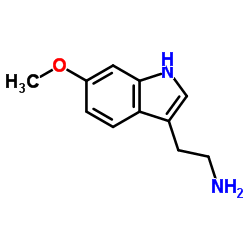 CAS#:3610-36-4
CAS#:3610-36-4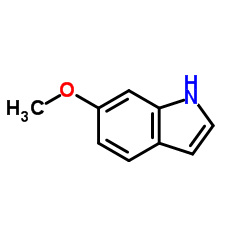 CAS#:3189-13-7
CAS#:3189-13-7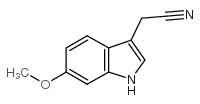 CAS#:23084-35-7
CAS#:23084-35-7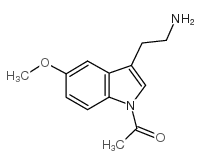 CAS#:22375-73-1
CAS#:22375-73-1 CAS#:7697-37-2
CAS#:7697-37-2 CAS#:487-03-6
CAS#:487-03-6 CAS#:122992-90-9
CAS#:122992-90-9 CAS#:525-57-5
CAS#:525-57-5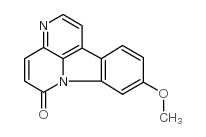 CAS#:74991-91-6
CAS#:74991-91-6 CAS#:486-84-0
CAS#:486-84-0![9-benzyl-7-methoxy-1-methylpyrido[3,4-b]indole structure](https://image.chemsrc.com/caspic/198/17019-04-4.png) CAS#:17019-04-4
CAS#:17019-04-4![1-methyl-9H-pyrido[3,4-b]indol-7-ol hydrobromide structure](https://image.chemsrc.com/caspic/133/84625-56-9.png) CAS#:84625-56-9
CAS#:84625-56-9![1H-Pyrrolo[2,3-c]pyridine-2,3-dicarboxylicacid, 7-methyl- structure](https://image.chemsrc.com/caspic/270/58795-15-6.png) CAS#:58795-15-6
CAS#:58795-15-6
